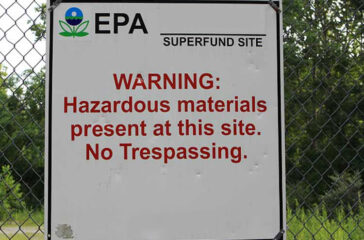“PFAS are everywhere” – Fears growing about PFAS in pesticides
By Meg Wilcox
Vicki Blazer has studied the health of the smallmouth bass in the Chesapeake Bay watershed for more than 20 years. As a research fishery biologist for the United States Geological Survey (USGS), she keeps a close eye on pollutants and other environmental factors that could be causing diseases and die-offs plaguing the popular sportfish.
Increasingly, her findings – and her fears – are focused on per- and polyfluoroalkyl substances (PFAS) and how pesticides containing types of PFAS chemicals appear to be accumulating in the fish.
 EWG
EWG








